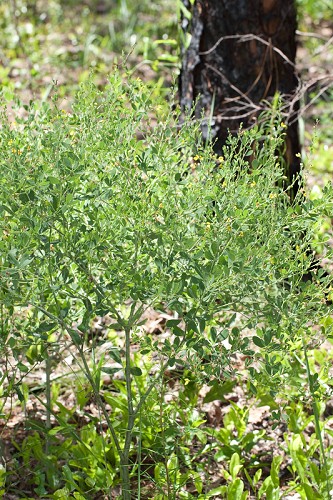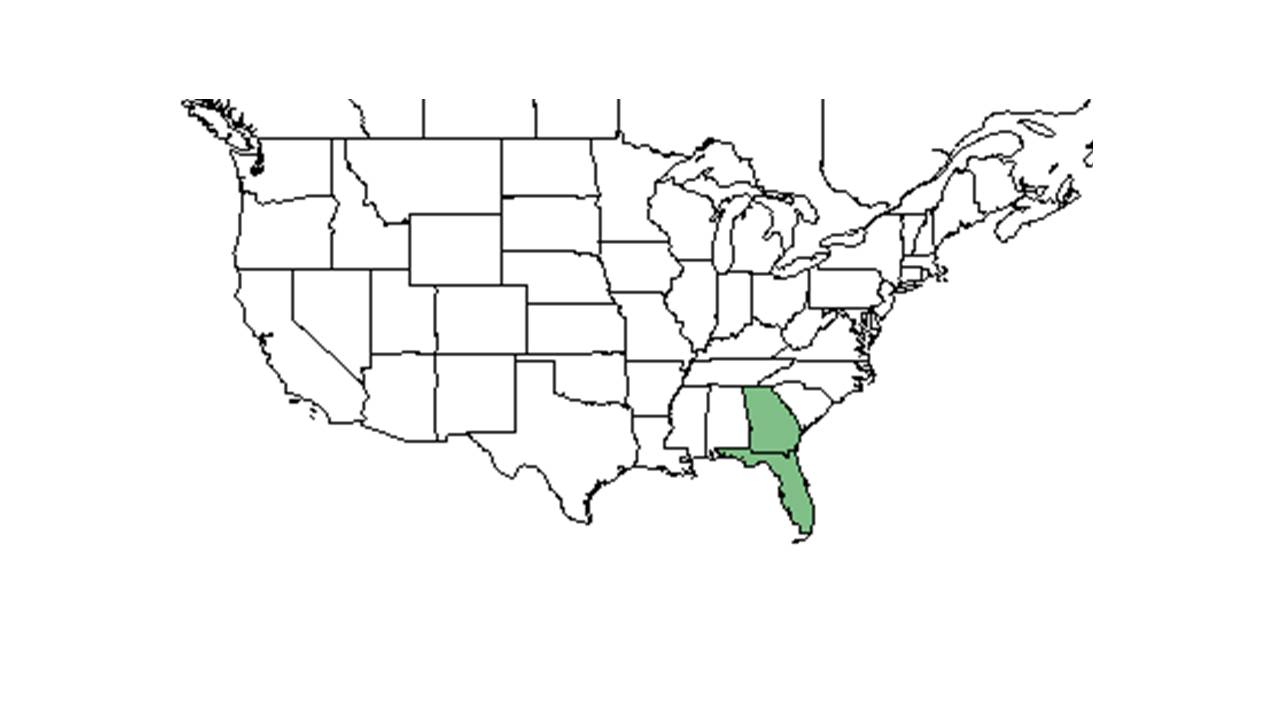Difference between revisions of "Baptisia lecontei"
HaleighJoM (talk | contribs) (→Ecology) |
(→Taxonomic notes) |
||
| Line 21: | Line 21: | ||
The genus name comes from the Greek word "bapto" meaning to dye.<ref name="missouri">[[http://www.missouribotanicalgarden.org/PlantFinder/PlantFinderDetails.aspx?kempercode=b650]] Missouri Botanical Gardens. Accessed: April 4, 2016</ref> | The genus name comes from the Greek word "bapto" meaning to dye.<ref name="missouri">[[http://www.missouribotanicalgarden.org/PlantFinder/PlantFinderDetails.aspx?kempercode=b650]] Missouri Botanical Gardens. Accessed: April 4, 2016</ref> | ||
| − | Synonyms: none | + | Synonyms: none<ref name=weakley>Weakley, A.S. 2020. Flora of the Southeastern United States. Edition of 20 October 2020. University of North Carolina at Chapel Hill, Chapel Hill, North Carolina.</ref> |
| − | Varieties: none | + | Varieties: none<ref name=weakley/> |
==Description== | ==Description== | ||
Latest revision as of 15:49, 22 May 2023
| Baptisia lecontei | |
|---|---|

| |
| Photo by John R. Gwaltney, Southeastern Flora.com | |
| Scientific classification | |
| Kingdom: | Plantae |
| Division: | Magnoliophyta - Flowering plants |
| Class: | Magnoliopsida - Dicotyledons |
| Order: | Fabales |
| Family: | Fabaceae ⁄ Leguminosae |
| Genus: | Baptisia |
| Species: | B. lecontei |
| Binomial name | |
| Baptisia lecontei Torr. & A. Gray | |

| |
| Natural range of Baptisia lecontei from USDA NRCS Plants Database. | |
Common names: Pineland wild indigo; Leconte's wild indigo
Contents
Taxonomic notes
The genus name comes from the Greek word "bapto" meaning to dye.[1]
Synonyms: none[2]
Varieties: none[2]
Description
Baptisia lecontei is a bushy perennial herb with knotty roots that grows from a solid, smooth, solitary, erect, woody stem up to 1 m tall. The petiolate compound leaves are smooth, alternately arranged, and palmately trifoliate with entire margins and green triangulate/lanceolate/folicaceous stipules (small leaf-like growths at the base of the leaf stalks). The bilaterally symmetric flowers form on terminal or axillary racemes and resemble butterflies in shape. They have clawed, orange or yellow petals that are ovoid to obovate in shape with wing and keel petals that are narrow and ear-shaped with obtuse or rounded tips. There are 9 - 10 separate stamens with smooth filaments and a circular style that is persistent in the unilocular legume fruit. The elongated, pubescent legume fruit is oblong or ellipsodial in shape and will persist on the stems after they split or burst open to release the seeds. Those seeds are smooth surfaced with resinous dots and are olive, brown, or black in color.[3][4]
Distribution
B. lecontei occurs throughout the northern two-thirds of Florida and in some counties in Georgia.[5]
Ecology
Habitat
B. lecontei requires open areas and strong, consistent winds for seed dispersal,[6] and prefers higher light levels with moist to dry sandy soils like loamy sand and loose sand. It is found in longleaf pine-oak sandhill communities, shrub oak ridges, and pine flatwoods; however, it can also be found in certain disturbed habitats such as power line corridors, roadsides, railways, and cleared areas.[4]
Associated species include Pinus palutris, Cuthbertia rosea, Quercus laevis, Quercus marilandica, Quercus geminata, Quercus falcata, Quercus incana, Prunus serotina, Prunus umbellata, Disopyros virginiana, Rhus copallina, Vaccinium arboreum, Vaccinium stamineum, Rubus cunefolius, and others.[4]
Phenology
The fruit of B. lecontei is a membranous to ligneous legume.[7] This species has been observed flowering from April through July, with peak inflorescence in May and June, and fruiting from June through August.[4][8]
Seed dispersal
Baptisia lecontei uses tumbleweed dispersal, a type of long-distance dispersal mechanism by which means the whole or a part of the plant serves to disperse seeds by being blown into the wind.[9] Mehlman observe that B. lecontei could be found over 50 meters away from where it originated, evidently by wind dispersal.[6] Other dispersal mechanisms include movement in heavy rainstorms, Florida Harvester Ants, and if rooted, the seeds fall to the ground. Legume pods dehisce vertically to release seeds.
Conservation, cultivation, and restoration
Cultural use
A closely related species, B. tinctoria has been historically used to treat scarlet fever, typhus, sore throat, ulcers, and open wounds.[10] It is unknown if all species of Baptisia can be used in these ways.
Photo Gallery
References and notes
- ↑ [[1]] Missouri Botanical Gardens. Accessed: April 4, 2016
- ↑ 2.0 2.1 Weakley, A.S. 2020. Flora of the Southeastern United States. Edition of 20 October 2020. University of North Carolina at Chapel Hill, Chapel Hill, North Carolina.
- ↑ [[2]]Encyclopedia of Life. Accessed: April 4, 2016
- ↑ 4.0 4.1 4.2 4.3 Florida State University Robert K. Godfrey Herbarium database. URL: http://herbarium.bio.fsu.edu. Last accessed: June 2014. Collectors: Loran C. Anderson, R.K. Godfrey, Richard D. Houk, John K. Small, George R. Cooley, Leonard J. Brass, Robert Kral, Mabel Kral, Walter S. Judd, Paul Kalaz, Steve L. Orzell, Edwin L. Bridges, S. W. Leonard, Allen G. Shuey, A. H. Curtiss, Grady W. Reinert, W. Wilson Baker, Richard D. Houk, and A. F. Clewell. States and Counties: Florida: Wakulla, Suwannee, Clay, Columbia, Bay, Gilchrist, Leon, Hernando, Marion, Franklin, Lake, De Soto, Duval, and Dixie. Georgia: Brantley, Brooks, Lowndes, and Lanier.
- ↑ [[3]]Native Florida Wildflowers. Accessed: April 4, 2016
- ↑ 6.0 6.1 Mehlman, D. (1993). "Tumbleweed dispersal in Florida sandhill Baptisia (Fabaceae)." Bulletin of the Torrey Botanical Club 120: 60-63.
- ↑ Mehlman, D. W. (1993). "Tumbleweed Dispersal in Florida Sandhill Baptisia (Fabaceae)." Bulletin of the Torrey Botanical Club 120(1): 60-63.
- ↑ Nelson, G. PanFlora: Plant data for the eastern United States with emphasis on the Southeastern Coastal Plains, Florida, and the Florida Panhandle. www.gilnelson.com/PanFlora/ Accessed: 7 DEC 2016
- ↑ Pijl 1972 cited by Mehlman 1993, more citation needed.
- ↑ Korchmal, Arnold & Connie. 1973. A Guide to the Medicinal Plants of the United States. The New York Times Book Company, New York.